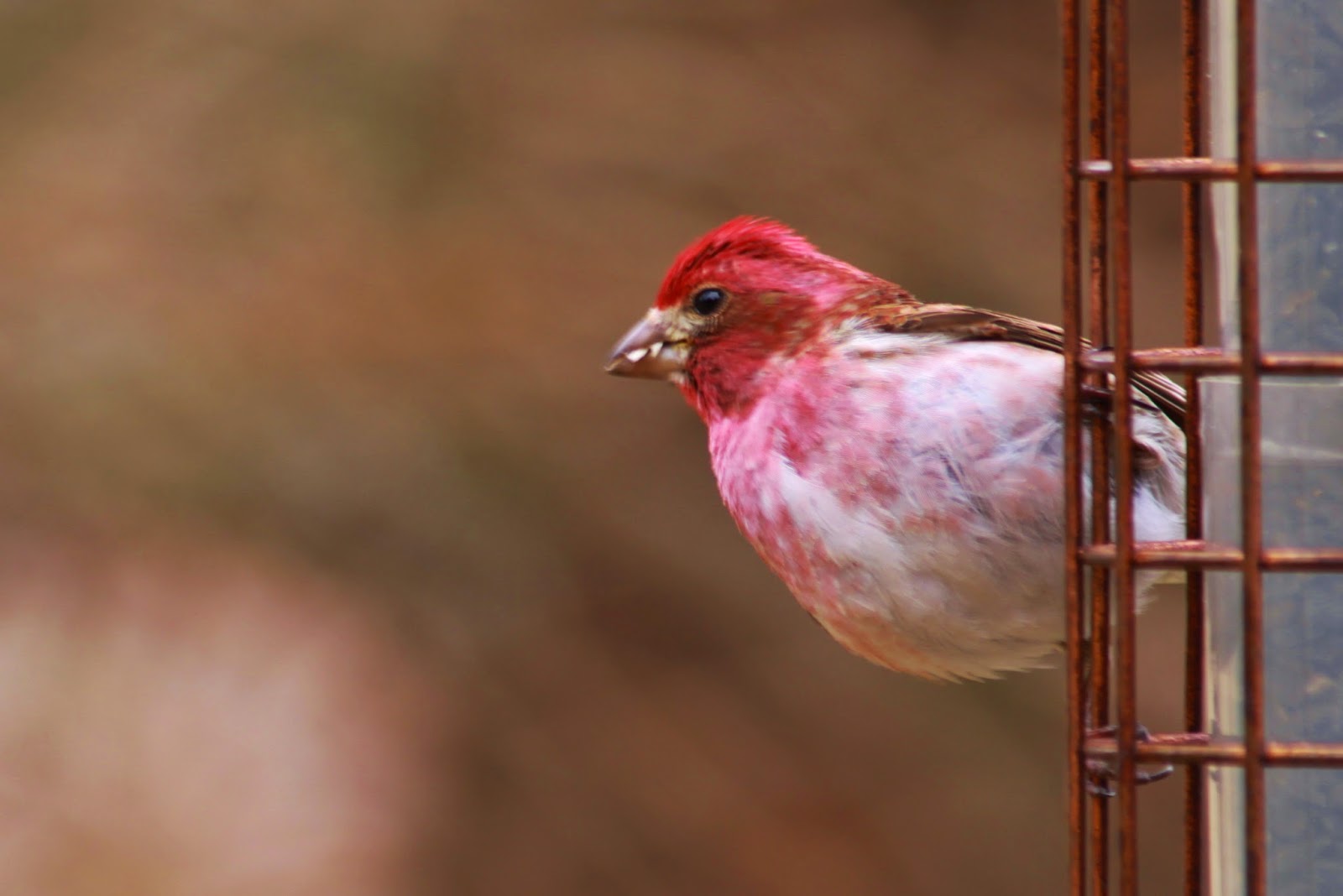Shrubs, trees and feeders
WINGIN’
IT
By
Kate Crowley
I stood on the deck
under a somber, colorless sky and watched the chickadees and juncos hop around
and flit back and forth to the feeders.
When I first walked out the door they all scattered, but it doesn’t take
long for these little birds to return to the business of feeding. One of these days I’m going to find a place
to sit near the feeders and see just how long it takes for them to overcome
their natural wariness and begin to feed around me.
 I also noticed a couple
chickadees sitting within the tangled branches of the mock orange shrubs next
to the sidewalk. I was only 3 feet away
from one of them, but it continued to industriously peck at the sunflower seed
held in its foot. There is an easy
comfort standing so close to a small bird like this. Beneath this shrub there is a spray of shells
indicating the popularity of this dining area. The same can be seen beneath the
other mock orange and beneath the lilac shrubs as well.
I also noticed a couple
chickadees sitting within the tangled branches of the mock orange shrubs next
to the sidewalk. I was only 3 feet away
from one of them, but it continued to industriously peck at the sunflower seed
held in its foot. There is an easy
comfort standing so close to a small bird like this. Beneath this shrub there is a spray of shells
indicating the popularity of this dining area. The same can be seen beneath the
other mock orange and beneath the lilac shrubs as well.
Our front and side yard
(that area which has grass and is mowed) is small for a house in the country, but
it is filled with a mix of trees and shrubs of various sizes. Some are
deciduous and others are coniferous. They
serve many purposes, but for now I’d like to talk about their importance to and
for the birds. I’m sure you have read
many times about improving the wildlife habitat around your yard – to attract
butterflies and other beneficial insects, as well as birds and some
mammals. We often think about these
types of landscape plans as a resource of food for the creatures, but shelter and
hiding places are just as important.
In the growing season,
everything is covered with leaves and it’s easy to see how they are valuable as
cover at that time, but even in winter when so many stand bare - just
interwoven twigs and branches of varying size, they are providing critical
shelter. Whenever perceived danger
threatens, whether that is a human walking out the door, or the swift swoop of
a hungry hawk, the birds scatter in all directions seeking the nearest hiding
place.
Since we are tempting
them to gather close to us and in a concentrated area, we are making it much
more likely that a predator will be able to catch one of them. This includes the feral or free roaming cat. So it is equally important that we provide
the hiding places.
In our yard that
includes the abovementioned shrubs, plus a spruce tree, blueberry shrubs, three
maple trees, and a couple other smaller flowering shrubs. Part way down our front field there is a
thick planting of wild plum and this is another favorite sanctuary. In between those plums and the front yard is
a field full of thick tall grasses that can also offer shelter to some birds.
It is not just from
predators that the birds need the shelter of trees and shrubs. Inclement
weather, especially cold and snow can be life threatening. The best protection is found among the
densely needled branches of pines, spruce and fir trees. Our front yard spruce is not doing well and
really doesn’t offer much of this sort of protection, but behind our house we
have a forest of conifers and I expect that in the worst weather and at night,
these trees are laden with birds all fluffed up and shivering to stay
warm.
 We have lots of standing
dead or dying trees, also known as ‘snags’ on our property. While considered ugly and a nuisance by many,
they serve birds in many ways, including another good source of protection from
the elements. Brown creepers will seek
shelter under loose pieces of bark and many woodpeckers create nest cavities in
these trees for the summer breeding season. In the ‘off’ season they remain
open and available to all birds.
Chickadees and nuthatches are known to gather in such cavities on cold
nights snuggled together in a warm bundle.
We have lots of standing
dead or dying trees, also known as ‘snags’ on our property. While considered ugly and a nuisance by many,
they serve birds in many ways, including another good source of protection from
the elements. Brown creepers will seek
shelter under loose pieces of bark and many woodpeckers create nest cavities in
these trees for the summer breeding season. In the ‘off’ season they remain
open and available to all birds.
Chickadees and nuthatches are known to gather in such cavities on cold
nights snuggled together in a warm bundle.
I would recommend that
you not plant thick shrubs closest to your feeders because they can provide an
equally good hiding place for a four legged hunter. Better to have some trees with branches higher
up where the birds can perch as they wait their turn at the feeders.
The garden catalogs are
already arriving and dreams of next summer’s flowers and vegetables will soon
sprout. This year look for a few new
trees or shrubs you can plant to enhance the beauty of your yard, as well as
the life for our feathered friends.




Comments
Post a Comment